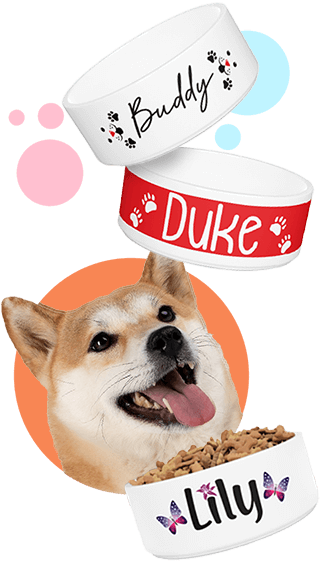

You’ve probably come across numerous adorable Chocolate Havanese dogs pictures online while researching for this dog breed. If you’re interested in Chocolate Havanese or want to learn more, you’ve come to the right article.
Many dog breeds in the chocolate color are relatively healthy, but can the same be said for Chocolate Havanese? We’ll discuss everything you need to know about the Chocolate Havanese dogs, including their health issues, temperament, grooming needs, lifespan, price, and more!
Table of Contents
What is a Havanese dog?
The Havanese dog is a member of the Bichon family. The ancestors of the Havanese originated in Cuba.
During the mid-1900s, Cuban immigrants brought the dogs to the United States after fleeing the Cuban revolution.
Soon after, it became clear to owners of these dogs that they were well-behaved family pets who enjoyed being around people.
A Havanese dog is a beloved pet because they are affectionate, energetic, patient with children and other animals, active in play, and extremely adorable.
This breed loves being around people and is not typically an independent type of companion animal, making them ideal lap dogs.
Besides that, they also come in some unique and extraordinary color varieties. One such variant is the Chocolate Havanese dog.
Havanese coat colors
The AKC recognizes about 25 shades and color combinations, out of which 16 are standard. Some popular coat colors for the Havanese include:
- Black
- Cream
- Fawn
- Gold
- Red
- Brindle
- Sable
- Chocolate
What is a Chocolate Havanese?

A Chocolate Havanese is a Havanese dog with diluted black color. It means that body parts that are supposed to be black in regular Havanese are chocolate or brown in Chocolate Havanese. Those body parts include eye rims, lips, paw pads, and nose.
A Chocolate Havanese coat can be of any color, including white, red, gray, and sable. It is also possible for the Chocolate Havanese to have fur so dark; they look black. You can recognize such a Chocolate Havanese by its brown nose.
You might also like: Chocolate French Bulldog – Complete Guide
Chocolate Havanese physical appearance
The Havanese is a small, adorable, yet sturdy dog. Its fur can be long and silky or dense and wooly.
The Havanese dog’s coat has a soft, straight, but sometimes wavy outer coat and a light undercoat.
A Chocolate Havanese dog has the same type of floppy ears as other variations of the breed. The eyes are brown or hazel. Other shades of brown are also standard.
Chocolate Havanese genetics
Chocolate color in dogs is actually diluted black. Both black and chocolate colors occur due to the eumelanin pigment.
The color gene of a black Havanese is represented by BB, whereas that of the Chocolate Havanese is bb.
A dog with the Bb color gene will be a chocolate carrier, meaning while it won’t be chocolate, it can produce chocolate children.
bb is a recessive gene, and for a Havanese puppy to inherit the chocolate color, both parents must have it.
If one parent is bb (chocolate), but the other is BB (black) or Bb (chocolate carrier), the chances of the pups being chocolate reduce accordingly.
To make it easier to understand, here’s a table showing all possible parent combinations and the likelihood of the offspring being chocolate.
Chances of getting a chocolate Havanese puppy
| bb | Bb | BB | |
| bb | 100% | 75% | 50% |
| Bb | 75% | 50% | 25% |
| BB | 50% | 25% | 0% |
Chocolate Havanese with blue eyes
Brown eyes are the standard characteristic in Havanese dogs. They are among the signs that the dog is purebred.
However, some Chocolate Havanese also have blue or heterochromatic eyes, which indicate crossbreeding.
Blue-eyed Havanese do not conform to the breed standard and therefore don’t qualify for any contests held for purebreds.
Chocolate Havanese Color Combinations
You can find this breed in a wide variety of colors and shades, both solid and patterned.
Chocolate Havanese that comes in brown, silver, white, tan, red, and sable are called Chocolate Parti Havanese.
Let’s discuss some shades and combos these dogs come in next.
Chocolate Havanese
Chocolate Havanese may not have chocolate-brown coats, but their lips, eyes, paw pads, and nose are brown.
A Havanese can be chocolate even if they have another color on their coat as long as it fulfills the above condition.
Dark Chocolate Havanese
Dark Chocolate Havanese have dark, almost black coats. Such a coat color can change as the dog grows older, turning into a lighter shade over time.
Chocolate and white Havanese
The Chocolate and white parti Havanese has a mostly brown body with white fur on its underside.
It can also have a pied look, meaning it would be brown with random white patches giving it a partially bleached look.
White Chocolate Havanese

A White Chocolate or Chocolate White Havanese has a primarily white coat with some brown on it. It still falls under chocolate as long as its nose is brown and not black.
Chocolate sable Havanese
Sabling is when the dog’s fur is lighter at the base and darker at the tips. A Chocolate sable Havanese has light brown hair with dark brown ends or tips.
Chocolate and tan Havanese
Tan points (or spots and patches) on a chocolate coat occur due to a rare genetic combination. A Chocolate and Tan Havanese will have chocolate or liver-colored coat with tan patches like a German Shepherd.
Chocolate Irish Pied Havanese
The Irish pied has chocolate-color fur on its head, legs, chest, and tail with lighter hair on its face.
Red Chocolate Havanese
A red Chocolate Havanese sounds exotic, but it doesn’t look a lot different from a Chocolate brown Havanese. This is a chocolate dog with a deep red tint to its coat.
Dilute Chocolate Havanese
Dilute Chocolate Havanese is a color you get by selectively breeding Havanese dogs with light chocolate color. The light color is because of a coat dilution gene. This dilution causes the dog’s nose and eyes to become a lighter shade of brown.
Chocolate merle Havanese
A Chocolate merle Havanese dog has chocolate or liver-colored fur with silvery-white areas and a wavy coat pattern called “clouds.” Breeders avoid this color due to its association with several congenital disorders.
Chocolate silver Havanese
Chocolate silver is when the Havanese has a brown nose, eye rims, paw pads, and lips but a silver-grey coat.
Chocolate silk Havanese
Chocolate Silk Havanese is an offshoot of the Havanese dog breed with slightly different facial features and a silky smooth coat.
These dogs don’t have AKC recognition but look similar to a regular Chocolate Havanese to the untrained eye.
Chocolate Brown Havanese dog
The Chocolate brown Havanese is simply a Havanese with a brown coat. As we’ve mentioned before, a Chocolate Havanese only has to have the chocolate gene, and the coat can be of any color.
A brown Chocolate Havanese dog is one whose fur is also brown.
Do Havanese puppies change color?
All Havanese puppies change color as they grow. Sometimes, this change is so slight that you wouldn’t notice it.
In other cases, the difference is noticeable and may make you wonder, “when do Havanese stop changing color?”
Some white Havanese puppies may develop spots of darker color as they grow up, whereas dark-colored Havanese can get lighter as they age. The color change isn’t a lifelong deal, and they stop changing color after they reach maturity.
Chocolate Havanese color change
It is normal for all Havanese puppies to change color, even if they are purebred, and Chocolate Havanese are no different.
Your Chocolate Havanese coat may start as dark chocolate brown and then lighten up to milk chocolate or even grey-brown.
Chocolate Havanese size, height, and weight
Chocolate Havanese puppies weigh 1 to 3 pounds after their first month. They grow quickly and become full grown Chocolate Havanese around the 8th-month mark.
Adult Chocolate Havanese can weigh up to 13 pounds and can reach a maximum height of 11.5 inches.
Chocolate Havanese Adult Size
| Size group | Toy |
| Height | 8.5-11.5 inches |
| Weight | 7-13 pounds |
Chocolate Havanese temperament and personality
Havanese are very intelligent and get along well with other dogs. In fact, they can befriend cats and other pets, including rabbits and birds.
The Chocolate Havanese dog’s personality matches its innocent and sweet appearance. This tiny dog is bursting with energy and loves to play.
Its friendly nature allows it to get along well with other animals and dogs, and it will definitely be your other dog’s best friend.
Are Chocolate Havanese great family dogs?
The Havanese breed is suitable for families with children. They also take well to the rules and regulations that come with living in a family unit. They are friendly with new people too and have no trouble accepting them as part of their family.
Chocolate Havanese training
The Havanese dog is easy to train, making it a good candidate for obedience classes or agility training. These dogs are naturally social and friendly, so you don’t have to give them rigorous socialization training.
The Havanese dog is a bright and intelligent breed. It loves to please people — especially its owner — and you don’t need to work too hard to train your Chocolate Havanese.
Chocolate Havanese exercise requirement
You should ensure that you give your Havanese dog just enough exercise to keep its body in top shape without exerting it. A well-toned and healthy Chocolate Havanese has an excellent chance of living a long and active life.
These dogs don’t need to exercise a lot, but they need enough to keep their energy level under control.
These dogs can do just fine with 30 to 40 minutes of daily activity, thanks to their small size. They are at their happiest when you’re around, so you may want to keep it that way.
Chocolate Havanese grooming and cleaning
The Havanese dog requires frequent grooming despite its minimal-shedding coat. You’ll have to brush the coat every couple of days and trim the hair at its paws to avoid getting your house dirty.
The Havanese coat looks fabulous, but it takes some effort on your part to look that way.
You need to check the ears of a Havanese dog for dirt and earwax because their floppy ears can hide grime buildup. Brush his or her teeth at least twice every week to avoid tooth decay.
Is Chocolate Havanese hypoallergenic?
The Havanese dog is not a hypoallergenic breed. Because these dogs produce allergens and depend on shedding their fur to regulate their body temperature, you cannot expect them to be hypoallergenic.
Chocolate Havanese food and diet
The Havanese dog does well with a protein-rich diet. These dogs have an active metabolism, so feeding them twice a day is essential. You will also need to provide high-quality, high-protein dog food that contains all the nutrients he or she needs to stay fit and healthy.
A good diet will provide fiber to help dogs stay fit, improve digestion, and maintain the coat’s lustrous shine.
Vitamins, supplements, and other nutrients are necessary to give the dog the energy to live a long and active life.
Chocolate Havanese common health issues
The Havanese dog breed is a healthy, sturdy pet that will not cause any health problems you do not anticipate. There’s a misconception that Chocolate Havanese has poor overall health, but this is not true.
This breed has fewer genetic disorders than many other standard breeds, but they are still susceptible to certain diseases.
1. Cataracts
Cataracts are when the dog’s lens starts becoming opaque, causing loss of vision and eventual blindness.
A Chocolate Havanese with cataracts will have a cloudy lens in the affected eye. Chocolate Havanese mostly experience this disease in their senior years.
2. Deafness
Havanese dogs can also suffer from deafness, which is a common genetic issue for them. This disease occurs when the inner ear’s nerve endings are damaged, making it difficult for the dog to hear normally.
3. Epilepsy
Epileptic seizures are a common issue with the Havanese dog breed that involves sudden jerking of the body and causing loss of consciousness.
Your Chocolate Havanese may experience this disease as early as its first year of life, but they can live for years with it.
4. Elbow dysplasia
Elbow dysplasia is a common bone disorder that is usually seen in the Havanese dog breed. It’s unknown why it happens, but you can trace it to the dog’s genetics. A Chocolate Havanese with a family history of elbow dysplasia is more likely to develop the problem.
5. Patellar luxation
This disorder causes sudden popping of the knee joint, which is common in the Havanese dog breed. This disease occurs when the knee cap slips out of place randomly.
6. Progressive retinal atrophy
This disease is a hereditary eye disorder that causes loss of eyesight. The cause is unknown, but there are tests to determine the dog’s level of vision before any irreversible damage occurs.
7. Renal diseases
Chocolate Havanese dogs are vulnerable to kidney issues, so you should take care of their water intake. These small dogs have narrow urinary tracts, putting them at risk of developing kidney and bladder stones.
8. Hypothyroidism
It is a common disease that is caused by low levels of thyroid hormone. The affected dog will be overweight, weak, and dull, but thankfully the condition is not life-threatening.
Chocolate Havanese lifespan
The average lifespan of Chocolate Havanese is 14 to 16 years. Small dogs like the Havanese breed generally have a lengthy lifespan, which is why they make ideal family dogs. They are also pretty healthy and capable of living a long, happy life.
Chocolate Havanese breeders
When looking for a reputable breeder of the Havanese dog breed, you should always select one that has healthy puppies available.
Go for a licensed breeder who has a good reputation in the community. You should also ensure that there are health test results available for the dog you’re adopting.
With the right breeder, you will be able to purchase a healthy puppy that will live a long and happy life, free from disabilities and diseases.
How much do Havanese puppies cost?
The Havanese dog is not one of the most expensive dog breeds. While some puppies sell for over $3,000, others cost as low as $500.
The price depends on the breeder’s standards, Havanese’s health status, and coat type. On average, they cost around $1,000 to $1,500.
Chocolate Havanese puppies for sale near me
If the Chocolate Havanese craze has fully reached you, and you’re asking the question, “where can I find Chocolate Havanese puppies near me?” then you’re in luck.
Check out some Chocolate Havanese sellers below.
Chocolate Havanese puppies for sale in Utah
Utah has many pet stores that have Havanese puppies for sale. You can also check out Sugarhouse Havanese if you live in that area.
Chocolate Havanese puppies for sale in Maine
Head over to Mainehavanese and check out their range of Havanese in every color. They also have some rare Chocolate and white Havanese puppies for sale.
Chocolate Havanese puppies for sale Florida
Check out Island Havanese for Chocolate brown Havanese puppies for sale in Florida right now.
Chocolate Havanese puppies Colorado
The Colorado Havanese Puppies’ Facebook page is an excellent place to start if you are looking for a place to buy light or dark Chocolate Havanese puppies for sale.
Chocolate Havanese puppies for sale in Ohio
Kate’s Puppies in Ohio has a great selection of Chocolate Havanese puppies for sale. Do check them out.
Chocolate Havanese for sale
Although most breeders sell Havanese pups, some people might want to get an adult dog instead.
We have mentioned above that the average Chocolate Havanese puppy price hovers around $1,000 to $3,000, so how much is a Chocolate Havanese full-grown?
We suggest checking out shelters and rescue centers rather than pet stores. Shelters usually have adult dogs at affordable prices.
Start with HavaneseRescue; they list Chocolate Havanese from all over the country up for adoption. If you’re lucky, you may even find Chocolate Havanese with blue eyes for sale at a low price there.
Is Chocolate Havanese right for me?
The Chocolate Havanese has the potential to be the right companion for any family, but you should consider whether it is right for you. There are several things that you need to think about before making a decision.
Are you ready for the grooming required? Are you prepared to take on training duties when required? Do any members of your family have allergies that would make this breed unsuitable?
Get this dog only if you can answer these questions positively.
Related Questions
Two rarest AKC-recognized colors for Havanese are chocolate and pure white. Merle is also extremely rare, but it isn’t a standard Havanese coat color.
DISCLAIMER: THIS WEBSITE DOES NOT PROVIDE MEDICAL ADVICE
The information, including but not limited to, text, graphics, images and other material contained on this website are for informational purposes only. No material on this site is intended to be a substitute for professional veterinary advice, diagnosis, or treatment. Always seek the advice of your veterinarian or other qualified health care provider with any questions you may have regarding a medical condition.
Resources:
https://en.wikipedia.org/wiki/Havanese_dog
https://images.akc.org/pdf/breeds/standards/Havanese.pdf

With over five years of specialized experience as an animal writer, my expertise lies in dog nutrition, health, behavior, grooming, and training. I am dedicated to delivering helpful and informative content that caters to the well-being of our furry friends. My primary goal is to empower pet owners with knowledge and ensure our canine companions thrive in health and happiness. In my free time, I love volunteering at local dog rescue centers.






